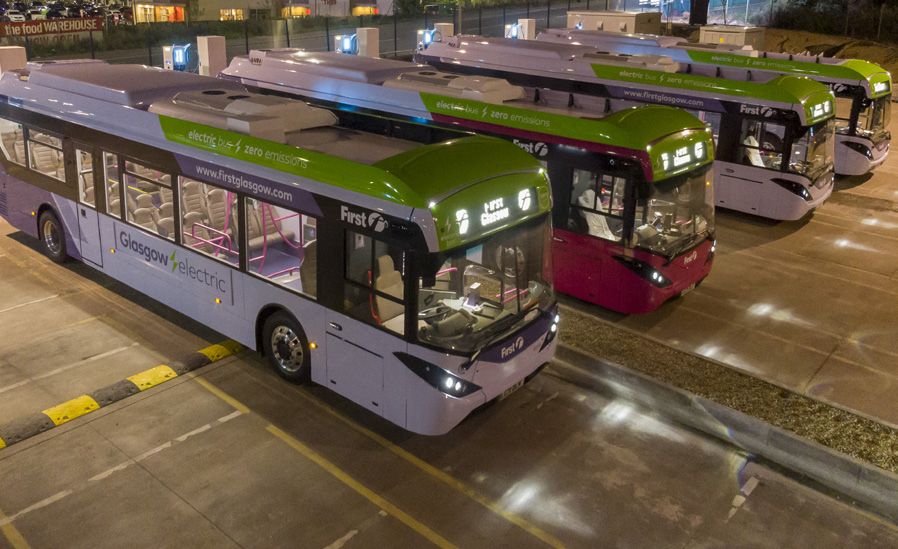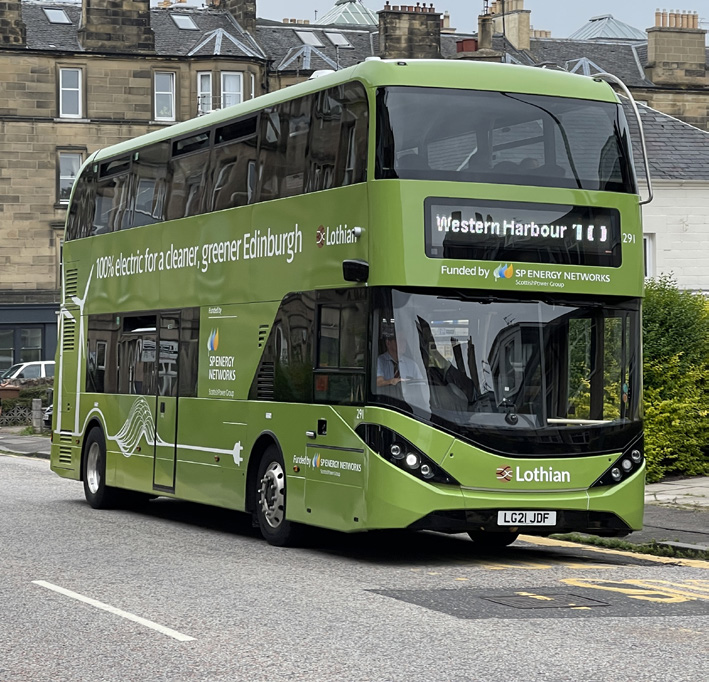Delivering the vision - Foster collaboration
Scotland’s industry, aided by Government, should work collectively and individually to foster increased collaboration with academia, the third sector and end-users to develop targeted research, projects and generate intellectual property.
Case Study - Bus Decarbonisation Taskforce
The Bus Decarbonisation Taskforce was established as a sub-group of the ZEM IAG following the work the IAG did looking at key opportunity areas for Scotland. It is a short-life group made up of leaders from the energy, finance, bus operating and bus manufacturing sectors, with one task: to co-design a pathway to a fully zero emission bus fleet in Scotland.
As of January 2022, the group has met four times. The first meeting was to agree its guiding vision and to set out the hurdles and opportunities in transitioning to zero emission.
The second focussed on finance, as that was considered the biggest hurdle to deployment.
Existing, emerging and potential financial models that fit the characteristics and cost profiles of zero emission buses and infrastructure, rather than the status-quo models for diesel systems, were published in the Taskforce’s Information and Ideas Pack.
The third focussed on the electricity and hydrogen infrastructure needed to support zero emission buses. This led to the production of a Guide for Fleet Operators, written by Scotland’s two electricity network operators, setting out how to approach electrification of depots (of all types, not just bus depots).

The fourth concentrated on supply- chain and circular economy, with the taskforce discussing Zero Waste Scotland’s research into circular economy for batteries, and agreeing to work closely with ZWS and Scottish Enterprise to put that research into action.
To date, Scottish Government and bus operators have each invested over £70 million in 272 zero- emission buses, three quarters of which are being built in Scotland, supporting quality, green jobs.
To further support and encourage the changes in the market being discussed by the taskforce, Scottish Government has replaced the Scottish Ultra Low Emission Bus Scheme with the Scottish Zero Emission Bus Challenge Fund.
This fund is designed to stimulate increasing commercial investment and a self-sustaining commercial market for zero-emission buses.
The fifth meeting, scheduled for February 2022, will explore how to ensure a ‘just transition’ to zero emission buses across the country, and the last meeting in summer 2022 will finalise the pathway.

Priorities
More input from industry with existing networks including the Sustainable Mobility Cluster Builder, the ZEMANS network and the Hydrogen Accelerator is important in supporting the sharing of knowledge, including funding sources, and to foster collaboration.
Continued engagement from Government with industry on key action areas such as innovation could help support public and private sector collaboration. For example a group similar to the short-life Zero Emission Industry Advisory Group.
Government and industry could work together to develop greater cross-border and international collaboration, for example, identifying opportunities for Scottish Government to use its membership of international networks such as the Zero Emission Vehicle Community and the Transport Decarbonisation Alliance to proactively introduce Scottish companies and institutions to governments, agencies and potential commercial partners in other countries.
A greater focus could be placed on themes relating to zero emission mobility in Government’s engagement with Horizon Europe and other multilateral funding programmes, providing increased intelligence on opportunities for participation.
< Previous | Contents | Next >